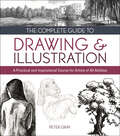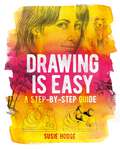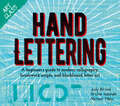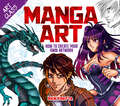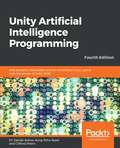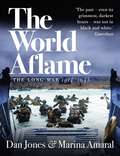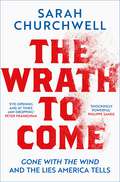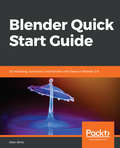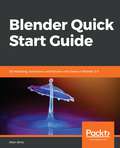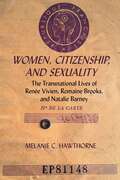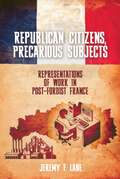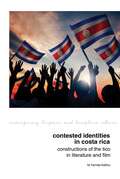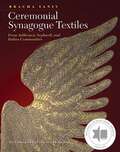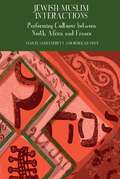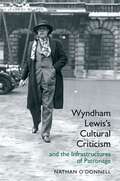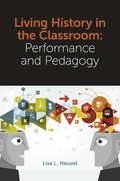- Table View
- List View
The Complete Guide to Drawing & Illustration: A Practical and Inspirational Course for Artists of All Abilities
by Peter GrayIf you have always wanted to excel at drawing, then The Complete Guide to Drawing & Illustration is for you. All you need is a pencil, a bit of blank paper and the expert guidance you will find within these pages. This book is designed to systematically teach you the essentials of drawing and lays the groundwork for you to develop your own personal drawing style.• Hands-on course in drawing and illustration, suitable for beginners and improvers alike• Practical, step-by-step, easy-to-follow exercises and demonstrations• From simple object drawing, move on to tackle all aspects of our environment, people and animals• Sketching and observation, materials and theory, tips and techniques - everything you need to know to create original artworks, cartoons and illustrations • More than 1,000 illustrations
Drawing is Easy: A step-by-step guide
by Susie HodgeDrawing is easy - but you need to know the basics. Artist and writer Susie Hodge gets you drawing right away. With simple exercises to build your confidence, she quickly shows you how to grasp the fundamentals. Every exercise is made up of step-by-step instructions with clear, easy-to-follow illustrations. Line by line, you can see how it's all done and soon you will be creating your own fantastic artworks.Step-by-step projects include: • A glass full of water• A forest on a Spring day• Faces and their proportions• Drawing draped and crumpled fabricsFor anyone who's ever wanted to try their hand at drawing, but hasn't had the confidence, this thorough guide will provide you with the groundwork to get you sketching what you see.
The Essential Book of Drawing: A guide to creating great art
by Duncan SmithThis fully illustrated, step-by-step guide is for anyone who wants to improve their drawing skills, from the complete novice to the mid-level and even the more experienced artist. With a little time, practice and some basic tools, you will soon be creating eye catching drawings of the world around you, including figures, animals, still lifes, buildings and seascapes. Professional artist Duncan Smith's lively and expressive illustrations are accompanied by a wealth of practical advice on how to draw with flair.
Art Class: A beginner’s guide to modern calligraphy, brushwork scripts, and blackboard letter art (Art Class)
by Michael Tilley Judy Broad Annabelle ClaytonTake a look around and you'll notice beautiful hand lettering is almost everywhere: from shop façades and menus to websites, product packaging, and birthday cards.In Art Class: Hand Lettering, you'll learn how to master three popular lettering crafts:• Modern calligraphy• Brushwork scripts• Blackboard letter artEach section is presented by an expert artist, who introduces you to their own aspect of this craft and showcases a range of different scripts for you to practise right here on the pages of this book. You'll be amazed at how professional your own personalised, hand-drawn lettering can look.
Art Class: How to Create Your Own Artwork (Art Class)
by Ben KreftaExciting, mesmerizing, simple yet complex, manga is artwork drawn in a typical Japanese cartoon style. This sensational guide covers everything the budding manga artist needs, from choosing essential materials to creating dynamic, innovative characters and scenarios. Topics include:• anatomy, poses, and expressions• monsterization and effects• genre stylings-from adventure, action, and fantasy to chibi and romance.ABOUT THE SERIES: Arcturus' Art Class books are a curated series of instructional art and craft titles designed to inspire artists of all levels, from beginner to professional. Stunningly presented in full color, and in a highly usable landscape format, these comprehensive books are packed with all the ideas, inspirations, step-by-step projects, and techniques you'll need to master the subject covered.
Unity Artificial Programming , Fourth Edition: Add Powerful, Believable, And Fun Ai Entities In Your Game With The Power Of Unity 2018!, 4th Edition
by Davide AversaUnity 2018 provides game and app developers with a variety of tools to implement Artificial Intelligence. Leveraging these tools via Unity's API or built-in features allows limitless possibilities when it comes to creating your game's worlds and characters. This fourth edition with Unity will help you break down Artificial Intelligence into simple concepts to give you a fundamental understanding of the topic to build upon.
The World Aflame: The Long War, 1914-1945
by Dan Jones Marina Amaral'The events of the first and second world wars are brought to vivid, startling life thanks to Amaral's skill at colourising contemporary images' ObserverThe epic, harrowing and world-changing story – in words and colourized images – of global conflict from the assassination of the Archduke Franz Ferdinand to the obliteration of Hiroshima by the dropping of the first atom bomb. The World Aflame embraces not only the total conflagrations of 1914–18 and 1939–45 and the international tensions, conflicting ideologies and malign economic forces that set them in train, but also the civil wars of the interwar period in Ireland and Spain, wars in Latin America, Britain's imperial travails in such places as Ireland, Somalia and Palestine, and events on the domestic 'fronts' of the belligerent nations.Like The Colour of Time, this is a collaboration between the gifted Brazilian artist Marina Amaral, and the leading British historian Dan Jones. A fusion of amazing pictures and well-chosen and informative words, The World Aflame offers a moving – and often terrifying – perspective on the bloodiest century in human history.'A new perspective on the bloodiest half-century in history' Daily Mail'Immensely vivid' Sunday Times'Brings history to life in breaktaking technicolour' Financial Times'Revelatory' Daily Express'The past – even its grimmest, darkest hours – was not in black and white' Guardian
The Wrath to Come: Gone with the Wind and the Lies America Tells
by Sarah ChurchwellThe history America never wanted you to read. 'The narrative took my breath away' Philippe Sands 'An extraordinarily and shockingly powerful read' Peter Frankopan 'One of the must-reads of the year' Suzannah Lipscomb 'Brilliant and provocative' Gavin EslerSarah Churchwell examines one of the most enduringly popular stories of all time, Gone with the Wind, to help explain the divisions ripping the United States apart today. Separating fact from fiction, she shows how histories of mythmaking have informed America's racial and gender politics, the controversies over Confederate statues, the resurgence of white nationalism, the Black Lives Matter movement, the enduring power of the American Dream, and the violence of Trumpism.Gone with the Wind was an instant bestseller when it was published in 1936; its film version became the most successful Hollywood film of all time. Today the story's racism is again a subject of controversy, but it was just as controversial in the 1930s, foreshadowing today's debates over race and American fascism. In The Wrath to Come, Sarah Churchwell charts an extraordinary journey through 160 years of American denialism. From the Lost Cause to the romances behind the Ku Klux Klan, from the invention of the 'ideal' slave plantation to the erasure of interwar fascism, Churchwell shows what happens when we do violence to history, as collective denial turns fictions into lies, and lies into a vicious reality.
Fashionopolis: The Price of Fast Fashion and the Future of Clothes
by Dana Thomas'A gripping blockbuster... Thomas researches meticulously and writes with simmering even-handed anger' TELEGRAPH. Fashionopolis is the definitive book on the cost of fast fashion, and a blueprint for how we get to a more sustainable future. Fashion has blighted our planet. Today, one out of six people on earth work in fashion, churning out 100 billion garments a year. Yet 98 percent of them do not earn a living wage, and 2.1 billion tonnes of clothing is thrown away annually. The clothing industry's exploitation of fellow humans and the environment has reached epic levels. What should we do?Bestselling author and veteran journalist Dana Thomas has travelled the globe to find the answers. In Fashionopolis, she details the damage wrought by fashion's behemoths, and celebrates the visionaries – including activists, artisans, designers, and tech entrepreneurs – fighting for change.We all have been casual about our clothes. It's time to get dressed with intention. Fashionopolis is the first comprehensive look at how to start.Reviews: 'Fascinating... Powerful... Thomas has succeeded in calling attention to the major problems of the fashion industry' New York Times'Thomas takes a story most of us think we know, but tells it better and in compelling, readable detail' The Times'Engaging and thorough... Fashionopolis has implications beyond cloth and thread' Financial Times'Thomas is a conscientious reporter – as evidenced in her research, which is studded with statistics' Times Literary Supplement
Nature's Hidden Charms: 50 Signs, Symbols and Practices from the Natural World to Bring Inner Peace, Protection and Good Fortune
by Liz DeanFeaturing folklore, symbology and practical rituals alongside ancient crafts and modern techniques this beautifully illustrated book contains over 50 creative ways to use the gifts of the natural world to make charms, talismans, amulets, altars and much more. These natural offerings provide us with protection, good fortune and healing.Being in nature helps us to relax and connect with our innate knowing. When we're connected, we naturally want to collect: a pink shell, sycamore key, a pinecone, or a pure white pebble that calls to us. Nature's Hidden Charms is an invitation to reach into the natural world, understand folklore and to explore and discover the hidden symbols and gifts that even the tiniest twig or stone can bring.Inside this treasure trove you will learn how to:• Prepare to open the senses to intentionally connect with nature• Create and make amulets, charms, alters, talismans and natural mandalas• Work with plants, trees and herbs throughout the seasons• Understand the folklore, history and symbology surrounding the plants and practices featured• Recognise and explore symbols that speak to you in the natural worldFrom making a healing lavender pouch to evoking the sacred power of the circle or arranging your charms as a mandala for meditation, this book is for anyone wanting to slow down, connect with nature and enjoy the simple pleasures of the natural world.
Blender Quick Start Guide: 3D Modeling, Animation, and Render with Eevee in Blender 2.8
by Allan BritoLearn the new Blender 2.8 user interface and make 3D models Key Features Find your way round the new user interface and tools of Blender 2.8 Create materials, apply textures and render scenes Use the new cutting-edge real-time render EEVEE in your projects Book Description Blender is open source 3D creation software. With a long history and an enthusiastic community of users, it is the ideal choice for almost any kind of work with 3D modeling or animation. However, for new users, its power and ?exibillity can sometimes be daunting, and that's when you need this book! The book starts by showing you round the all-new Blender 2.8 user interface. You'll look at the most commonly-used options and tools, such as navigating in 3D and selecting objects. You will then use and manipulate one of the most important windows of the interface, the 3D View. You'll learn how to use essential tools for working with 3D modeling. To give your models the feel of real-world objects, you'll learn how to create materials and set up surfaces. You'll see how to use Physically-Based Rendering (PBR), which allows you to craft realistic surfaces such as wood, stone, and metal. You will also work with Eevee, a new real-time render engine in Blender. You will see how to add motion to objects, making use of Blender's impressive 3D animation features. Finally, you'll learn how to create scenes and organize them for rendering, and later add titles and effects using built-in Blender tools. By the end of the book, you will be able to use Blender 2.8 new UI, Create 3D Models with textures, Animations, and Render them in real-time using Eevee. What you will learn Manipulate and visualize your 3D objects in Blender Use polygon modeling tools such as extrude, loop cut, and more Apply precision modeling tools like snapping and the 3D Cursor Render a scene using the real-time engine Eevee Create materials for Eevee and Cycles Render a scene with the Eevee real-time engine Use PBR textures to craft realistic surfaces such as wood with the Shader Editor Add motion and animation using keyframes Create animation loops using curves and modifiers Who this book is for This book is for anyone interested in taking their steps with Blender. If you're an experienced 3D artists or hobbyist, this book will help you with its features.
Blender Quick Start Guide: 3D Modeling, Animation, and Render with Eevee in Blender 2.8
by Allan BritoLearn the new Blender 2.8 user interface and make 3D models Key Features Find your way round the new user interface and tools of Blender 2.8 Create materials, apply textures and render scenes Use the new cutting-edge real-time render EEVEE in your projects Book Description Blender is open source 3D creation software. With a long history and an enthusiastic community of users, it is the ideal choice for almost any kind of work with 3D modeling or animation. However, for new users, its power and ?exibillity can sometimes be daunting, and that's when you need this book! The book starts by showing you round the all-new Blender 2.8 user interface. You'll look at the most commonly-used options and tools, such as navigating in 3D and selecting objects. You will then use and manipulate one of the most important windows of the interface, the 3D View. You'll learn how to use essential tools for working with 3D modeling. To give your models the feel of real-world objects, you'll learn how to create materials and set up surfaces. You'll see how to use Physically-Based Rendering (PBR), which allows you to craft realistic surfaces such as wood, stone, and metal. You will also work with Eevee, a new real-time render engine in Blender. You will see how to add motion to objects, making use of Blender's impressive 3D animation features. Finally, you'll learn how to create scenes and organize them for rendering, and later add titles and effects using built-in Blender tools. By the end of the book, you will be able to use Blender 2.8 new UI, Create 3D Models with textures, Animations, and Render them in real-time using Eevee. What you will learn Manipulate and visualize your 3D objects in Blender Use polygon modeling tools such as extrude, loop cut, and more Apply precision modeling tools like snapping and the 3D Cursor Render a scene using the real-time engine Eevee Create materials for Eevee and Cycles Render a scene with the Eevee real-time engine Use PBR textures to craft realistic surfaces such as wood with the Shader Editor Add motion and animation using keyframes Create animation loops using curves and modifiers Who this book is for This book is for anyone interested in taking their steps with Blender. If you're an experienced 3D artists or hobbyist, this book will help you with its features.
Getting Started with SketchUp Pro: Embark on your 3D modeling adventure with expert tips, tricks, and best practices
by David S. SellersOwing to its ability to create models quickly and with high level of dimensional accuracy, SketchUp Pro has become a popular choice for many industries, including architecture, interior design, landscape architecture, and video game design. If you are seeking to adopt Trimble's exceptional design software, Getting Started with SketchUp Pro serves as an ideal primer to prepare and equip you for its use. This book will help you lay the foundation of a project from scratch, set up appropriate units, and follow a guided path to structure your 3D models. You’ll explore the workflows used for creating designs from sketches, making CAD drawings (DWG), and even updating your existing 3D models. Finally, you’ll work with extensions and 3D Warehouse to find new workflows and models to add to your skill set. By the end of this SketchUp book, you’ll be able to confidently create and share models of your design through CAD drawings and 3D views, and even take them online through the 3D WarehouseKey FeaturesPut your architectural design knowledge to work by exploring practical examplesGain a deeper understanding of SketchUp's GUI, modeling tools, and editing featuresExecute full design creations with detailed steps without getting overwhelmed by SketchUp's advanced functionalitiesWhat you will learnBuild massing 3D models and preliminary designsIdentify optimal methods to boost productivity and efficiency with SketchUp ProExplore SketchUp tools and understand their diverse functionalityGet a complete walkthrough of editing tools, materials, and components in SketchUpCreate and edit components and explore component optionsGet acquainted with SketchUp extensions, 3D Warehouse, and additional tools and resourcesWho this book is forThis book is for architects, landscape architects, interior designers, woodworkers, and 3D modelers with beginner-level knowledge of the architectural design of living spaces. Basic computer skills are all you need to get started.
Blender Quick Start Guide: 3d Modeling, Animation, And Render With Eevee In Blender 2. 8
by Allan BritoThe persistence of memory: Remembering slavery in Liverpool, 'slaving capital of the world' (Liverpool Studies in International Slavery #18)
by Jessica MoodyAn Open Access edition of this book will be made available on publication on our website and on the OAPEN Library, funded by the LUP Open Access Author Fund.The Persistence of Memory is a history of the public memory of transatlantic slavery in the largest slave-trading port city in Europe, from the end of the 18th century into the 21st century; from history to memory. Mapping this public memory over more than two centuries reveals the ways in which dissonant pasts, rather than being ‘forgotten histories’, persist over time as a contested public debate. This public memory, intimately intertwined with constructions of ‘place’ and ‘identity’, has been shaped by legacies of transatlantic slavery itself, as well as other events, contexts and phenomena along its trajectory, revealing the ways in which current narratives and debate around difficult histories have histories of their own. By the 21st century, Liverpool, once the ‘slaving capital of the world’, had more permanent and long-lasting memory work relating to transatlantic slavery than any other British city. The long history of how Liverpool, home to Britain’s oldest continuous black presence, has publicly ‘remembered’ its own slaving past, how this has changed over time and why, is of central significance and relevance to current and ongoing efforts to face contested histories, particularly those surrounding race, slavery and empire.
Women, Citizenship, and Sexuality: The Transnational Lives of Renée Vivien, Romaine Brooks, and Natalie Barney
by Melanie HawthorneUntil well into the twentieth century, the claims to citizenship of women in the US and in Europe have come through men (father, husband); women had no citizenship of their own. The case studies of three expatriate women (Renée Vivien, Romaine Brooks, and Natalie Barney) illustrate some of the consequences for women who lived independent lives. To begin with, the books traces the way that ideas about national belonging shaped gay male identity in the nineteenth century, before showing that such a discourse was not available to women and lesbians, including the three women who form the core of the book. In addition to questions of sexually non-conforming identity, women's mediated claim to citizenship limited their autonomy in practical ways (for example, they could be unilaterally expatriated). Consequently, the situation of the denizen may have been preferable to that of the citizen for women who lived between the lines. Drawing on the discourse of jurisprudence, the history of the passport, and original archival research on all three women, the books tells the story of women's evolving claims to citizenship in their own right.
Republican Citizens, Precarious Subjects: Representations of Work in Post-Fordist France (Studies in Modern and Contemporary France #7)
by Jeremy LaneOver recent decades concerns at the increased scarcity and precarity of salaried employment have dominated political struggles, theoretical debates and cultural representations in France. This study argues that such concerns are evidence of a profound shift in contemporary French economy, culture and society. Engaging with work in political economy and sociology, the book sketches a new interpretative framework, the better to understand the nature and implications of these profound changes. It examines the challenges such changes have posed to fundamental French republican values, arguing they have opened up a rift between older notions of French republican citizenship and the precarious forms of subjectivity characteristic of post-Fordist labour. The book traces the symptoms of this rift in a range of cinematic and literary representations of the contemporary workplace, as these depict the dilemmas faced, the trajectories followed, and the geographical regions inhabited by French workers of different ages, sexes, social classes, and ethnicities.
Contested Identities in Costa Rica: Constructions of the Tico in Literature and Film (Contemporary Hispanic and Lusophone Cultures #20)
by Liz Harvey-KattouCosta Rica is a country known internationally for its eco-credentials, dazzling coastlines, and reputation as one of the happiest and most peaceful nations on earth. Beneath this façade, however, lies an exclusionary rhetoric of nationalism bound up in the concept of the tico, as many Costa Ricans refer to themselves. Beginning by considering the very idea of national identity and what this constitutes, this book explores the nature of the idealised tico identity, demonstrating the ways in which it has assumed a white supremacist, Central Valley-centric, patriarchal, heteronormative stance based on colonial ideals. Chapters two and three then go on to consider the literature and films produced that stand in opposition to this normative image of who or what is tico and their creation as vehicles of soft power which aim to question social norms. This book explores protest literature from the 1970s by Quince Duncan, Carmen Naranjo, and Alfonso Chase who narrate their experiences from the margins of society by virtue of their identity as Afro-Costa Rican, feminist, and homosexual authors. Cinema from the twenty-first century is then analysed to demonstrate the nuanced position chosen by national directors Esteban Ramírez, Paz Fábrega, Jurgen Ureña, and Patricia Velásquez to challenge the dominant nation-image as they reinscribe youth culture, a female consciousness, trans identity, and Afro-Costa Rica onto the fabric of the nation.
The Reclining Nude: Agnès Varda, Catherine Breillat, and Nan Goldin (Contemporary French and Francophone Cultures #65)
by Emma WilsonThe figure of a woman reclining, in repose, displayed, abandoned, fallen, asleep, or dreaming, returns in the work of women filmmakers and photographers in the twentieth and twenty-first centuries. Filmmakers Agnès Varda and Catherine Breillat, and American photographer working in Paris, Nan Goldin, return to the paintings of Titian, Velázquez, Goya, Courbet, and others, re-imagining, and re-purposing, their images of female beauty, display, (auto)eroticism, and intimacy. This book, a sensuous evocation of these feminist works, claims a female-identified pleasure in looking. The artists explored align images of repose and sensuality with other images of horizontality and proneness, of strong emotional content, images of erotic involvement, of vulnerability, of bodily contortion, of listlessness, grief, and depression. The reclining nude is for all three artists a starting point for a reflection on the relation of film, projections, and still photography, to painting, and a sustained re-imagining of the meanings conjured through serial returns to a particular pose. This book claims that the image of the reclining nude is compelling, for female-identified artists – and for all allied in feeling and picturing femininity – in the sensitive, ethically adventurous, politically complex feminist issues it engages. The reclining nude is an image of passivity, of submission, of hedonism. It allows thought about passivity as pleasure, about depression and grief figured posturally, about indolence as a form of resistance and anarchy. Through this image, female-identified artists have claimed freedom to offer new focus on these extremes of emotion. They are re-imagining horizontality.
Image of a Man: The Journal of Keith Vaughan (Liverpool English Texts and Studies #77)
by Alex Belsey‘I want to know what I am, what I want, what I can do, what is real, what is lovely.’ The post-war British artist Keith Vaughan (1912–77) was not only a supremely accomplished painter; he was an impassioned, eloquent writer. Image of a Man is the first book to provide a comprehensive critical reading of Vaughan’s extraordinary journal, which spans thirty-eight years and sixty-one volumes to form a major literary work and a fascinating document of changing times. From close textual analysis of the original manuscripts, this book uncovers the attitudes and arguments that shaped and reshaped Vaughan’s identity as a man and as an artist. It reveals a continual process of self-construction through journal-writing, undertaken to navigate the difficulties of conscientious objection, the complications of desire as a gay man, and the challenges of making meaningful art. By focussing on Vaughan’s journal-writing in the context of its many influences and its centrality to his art practice, Image of a Man offers not only a compelling new critical biography of a significant yet underappreciated artist, but also a sustained argument on the constructed nature of the ‘artist’ persona in early and mid-twentieth-century culture – and the opportunities afforded by journal and diary forms to make such constructions possible.
Inside the invisible: Memorialising Slavery and Freedom in the Life and Works of Lubaina Himid (Liverpool Studies in International Slavery #14)
by Celeste-Marie Bernier Alan Rice Lubaina Himid Hannah DurkinInside the Invisible provides the first examination of the work of Turner Prize-winning Black British artist and curator Professor Lubaina Himid CBE. This comprehensive volume breaks new ground by theorizing her development of an alternative visual and textual language within which to do justice to the hidden histories and untold stories of Black women, children, and men bought and sold into transatlantic slavery. For Himid, the act of forgetting within official sites of memory is indivisible from the art of remembering within an African diasporic art historical tradition. She interrogates the widespread distortion and even wholesale erasure of Black bodies and souls subjected to dehumanizing stereotypes and grotesque caricatures within western imaginaries and dominant iconographic traditions over the centuries. Creating bodies of work in which she comes to grips with the physical and psychological realities of iconic and anonymous African diasporic individuals as living breathing human beings rather than as objectified types, she bears witness not only to tragedy but to triumph. A self-appointed researcher, historian, and storyteller as well as an artist, she succeeds in seeing “inside the invisible” regarding untold narratives of Black agency and artistry by mining national archives, listening to oral stories, acknowledging art-making traditions, and revisiting autobiographical testimonies.
Ceremonial Synagogue Textiles: From Ashkenazi, Sephardi, and Italian Communities (The Littman Library of Jewish Civilization)
by Bracha YanivNational Jewish Book Awards 2019 Finalist for Visual Arts. Richly illustrated and meticulously documented, this is the first comprehensive survey of synagogue textiles to be available in English. Bracha Yaniv, a leading expert in the field of Jewish ceremonial textiles, records their evolution from ancient times to the present. The volume contains a systematic consideration of the mantle, the wrapper, the Torah scroll binder, and the Torah ark curtain and valance, and considers the cultural factors that inspired the evolution of these different items and their motifs. Fabrics, techniques, and modes of production are described in detail; the inscriptions marking the circumstances of donation are similarly subjected to close analysis. Fully annotated plates demonstrate the richness of the styles and traditions in use in different parts of the Jewish diaspora, drawing attention to regional customs. Throughout, emphasis is placed on presenting and explaining all relevant aspects of the Jewish cultural heritage. The concluding section contains transcriptions, translations, and annotations of some 180 inscriptions recording the circumstances in which items were donated, providing a valuable survey of customs of dedication. Together with the comprehensive bibliography, inventory lists, and other relevant documentation, this volume will be an invaluable reference work for the scholarly community, museum curators, and others interested in the Jewish cultural heritage.
Jewish–Muslim Interactions: Performing Cultures between North Africa and France (Francophone Postcolonial Studies #11)
By exploring dynamic Jewish-Muslim interactions across North Africa and France through performance culture in the 20th and 21st centuries, we offer an alternative chronology and lens to a growing trend in media and scholarship that views these interactions primarily through conflict. Our volume interrogates interaction that crosses the genres of theatre, music, film, art, and stand-up, emphasising creative influence and artistic cooperation between performers from the Maghrib, with a focus on Algeria, Tunisia, Morocco, and diaspora communities, notably in France. The plays, songs, films, images, and comedy sketches that we analyse are multilingual, mixing not only with the former colonial language French, but also the rich diversity of indigenous Amazigh and Arabic languages. The volume includes contributions by scholars working across and beyond disciplinary boundaries through anthropology, ethnomusicology, history, sociology, and literature, engaging with postcolonial studies, memory studies, cultural studies, and transnational French studies. The first section examines accents, affiliations, and exchange, with an emphasis on aesthetics, familiarity, changing social roles, and cultural entrepreneurship. The second section shifts to consider departure and lingering presence through spectres and taboos, in its exploration of absence, influence, and elision. The volume concludes with an autobiographical afterword, which reflects on memories and legacies of Jewish-Muslim interactions across the Mediterranean. Contributors: Cristina Moreno Almeida, Jamal Bahmad, Adi Saleem Bharat, Aomar Boum, Morgan Corriou, Ruth Davis, Samuel Sami Everett, Fanny Gillet, Jonathan Glasser, Miléna Kartowski-Aïach, Nadia Kiwan, Hadj Miliani, Vanessa Paloma Elbaz, Elizabeth Perego, Christopher Silver, Rebekah Vince, Valérie Zenatti
Wyndham Lewis's Cultural Criticism and the Infrastructures of Patronage
by Nathan O’DonnellWyndham Lewis was both a serious proponent and forthright critic of modernism. His assault upon his contemporaries foreshadowed the twenty-first century scholarly interest in the networks, professions, and coteries – rather than the myths and heroics – of modernism. Lewis, after a long period of neglect, now sits increasingly at the heart of a revised field of modernist studies.This book explores Lewis’s cultural criticism as a valuable body of writing which posed questions that have yet to be answered about subsidy and the function of the artist, about professionalism and ethics, about who should pay for the arts, and what the artist’s obligations should be in return. It is the first book-length study of this body of critical writing, through which Lewis articulated the central and most lasting of his critical preoccupations: the question of how the work of the artist is to be valued, and the artist to be paid, in a professionalised society. This book makes an important contribution to the long overdue reassessment of a complex, contrarian figure, spanning the disciplines of literature and the visual arts, who asked pressing questions about the role and status of the artist, and ultimately about the value (economic, civic, political) of the work of art.
Living History in the Classroom: Performance and Pedagogy
by Lisa L. HeuvelWhether it’s creating their own teachable moments in costume or coaching students, many educators want to use historic characters in the classroom but lack strategies and resources. The types of questions they ask are answered in Living History in the Classroom: Performance and Pedagogy by outstanding content experts with practical insights into performance, public history, and education. The conceptual framework is based on an instructional model of performance pedagogy, developed by observing outstanding historical character portrayals and analyzing them based on intent, content and action. Written by master teachers and professionals who collaborate nationwide with teachers and students, this work is designed to help educators use the powerful tools of storytelling and interpretation to make history and social studies “come alive” for K-12 students. The professionals who have contributed to this book understand the challenges of a classroom environment, either as teachers, guest artists, or administrators. All have real-world experience with teacher development programs in the disciplines of history and social studies along with recognized content knowledge..
